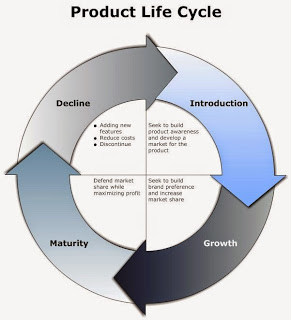
Hello Readers,
Here our team has brought the important notes on Introduction to Marketing. Hope this will help you all in many upcoming Banking exams.
Marketing
Marketing is nothing but Telling about your product to sell it.
The technical definition is
Marketing is the process of planning and executing the concepts, pricing, promotion and distribution of ideas/goods/services to satisfy individual's/organizational.
Marketing is the process of communicating the value of a product or service to customers, for the purpose of selling that product or service.
There are several types of marketing are there, some of them are
Bench Marketing: The Bench Marketing is nothing but the comparison of the business processes with competitors and improving prevailing ones.
Drip Marketing: Drip Marketing is sending promotional items to Clients.
Viral Marketing: Viral Marketing is marketing by the word of the mouth, having a high pass rate from person to. The best example for this is creating a 'buzz' in the industry.
Guerilla Marketing: Guerilla Marketing is an Unconventional marketing intended to get maximum results from minimal resources (Maximum results from Minimum resources).
Social Media Marketing: Marketing using online communities, social networks, blog marketing etc is called the social media marketing.
Internet Marketing: The marketing of products or services over the Internet is called Internet Marketing. It is also known as i-marketing, web-marketing, online-marketing, Search Engine Marketing (SEM) and e-Marketing.
Digital Marketing: The marketing which uses digital advertising is called digital marketing. Television, Radio, Internet, mobile etc.
Direct Marketing: If the company directly reaches to the customers on a personal basis (ex : phone calls, private mailings, etc) rather than traditional channel of advertising (like TV, Newspapers, etc) then that type of marketing is called the Direct Marketing. There are a number of types in direct marketing. Some of them are
Direct Mail Marketing: Advertising material sent directly to home and business addresses (This is the most common form of direct marketing).
Telemarketing: It is the second most common form of direct marketing, in which marketers contact consumers by phone.
Email Marketing: This type of marketing targets customers through their email accounts (you might have observed them in your e mails too).
Indirect Marketing: It is the distribution of a particular product through a channel that includes one or more re-sellers.
Difference between Direct and Indirect Marketing
Direct marketing is where the consumer hears about a product or service from a sales person or associate, representing the company offering the product or service.
For example, an advertisement may ask the prospect to call on a free phone number, mail in a response or order, or click on a link to a website. This is an example of marketing is Direct Marketing.
Indirect marketing is where the consumer hears about a product or service from a third party. The third party could consist of word of mouth from another customer, radio, television, newspaper, or billboards.
Example of Indirect marketing is Katrina Kaif, as she markets LUX but she doesn’t own that company.
Product Life Cycle (PLC): Product life cycle is a business analysis that attempts to identify a set of common stages in the life of commercial products. In other words the 'Product Life cycle' PLC is used to map the lifespan of the product such as the stages through which a product goes during its lifespan.

Important Abbreviations
Ad: Advertising
MKT: Marketing
B2B: Business to Business
F500: Fortune 500
EM: Email
DM: Direct Mail
ABM: Account Based Marketing
TAP: Targeted account Programs
DM: Digital Marketing
SE: Search Engine
SERP: Search Engine Results Page
SEM: Search Engine Marketing
SEO: Search Engine Optimization
SMM: Social Media Marketing
SMO: Social Media Optimization
PPC: Pay Per Click
PPA: Pay Per Action
PPI: Pay Per Impression
PPL: Pay Per Lead
CTR: Click Through Rate
CPC: Cost Per Click
CPL: Cost Per Lead
CPS: Cost Per Sale
CMS: Content Management System
CRM: Content Relationship Management
MAP: Marketing Automation Platform
SFA: Sales Force Automation
BI: Business Intelligence
MLM: Multi Level Marketing
FDI: Foreign Direct Investment
POP: Point of Purchase Display
R&D: Research and Development
UPC: Universal Product Code
POS: Point of Sale Display
ROI: Return on Investment
CLS: Costumer Location System
RPM: Resale Price Maintenance
VAT: Value Added Tax
CR: Concession Rate
DRA: Direct Response Advertising
CLV: Customer Lifetime Value
eCommerce: Electronic Commerce
CRM: Customer Relationship Management
NPD: New Product Development
ROMI: Return on Marketing Investment
LTV: Life Time Value
BDI: Brand Development Index
CDI: Category Development Index
MR: Market Research
AIM: Alternative Investment Market
MS: Market Share
TMV: True Market Value
MAA: Marketing Authorization Application
MS: Market Surveillance
WOMM: Word of Mouth Marketing
IDRA: Industries Development and Regulation Act
UX: User Experience
GRS: Gross rating Point
BEP: Break Even Point
PAN: Permanent Account Number
IMF: International Monetary Fund
EOQ: Economic Order quality

Join The Discussion